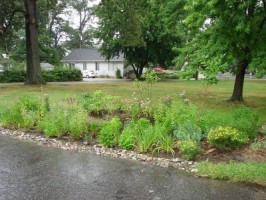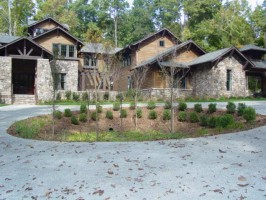From Scott Woodbury
MSD is encouraging the use of rain gardens. Still no utility break for them, but there is a break for permeable paving. Unfortunately permeable paving is expensive. MSD seems to be on the fence about using drainage pipes (called underdrains). One camp believes that water can not stand for more than a few hours max (underdrains facilitate this but add a fair bit of expense) and the other camp believes that capturing as much water as possible, no mater how long it stands, is the best way to go because the goal is to get water into the ground not into the storm sewer.
There are two pilot projects, one in U City and the other in Ladue. Each involves about 6-8 residents who all impact a single small drainage area. They each are receiving free rain gardens and water flow will be monitored to see how much water can be captured by a string of small rain gardens (called micro detention). Micro detention is deemed by the leaders in the field to be the way to go because huge detention (like for an entire neighborhood or mall) costs so much to construct and they are prone to failure, costly repairs and upkeep.
Over the past 2.5 years MSD has approved about 1,000 BMP’s (Best Management Practices) that fall under their new greener guidelines, many of which have to be planted with native plants (these are for projects that disturb more than 1 acre and so are commercial in scale). The most popular method is called Bioretention of which there were about 200 constructed over the past 2.5 years.
Bioretention is like a long rain garden along the edge of a parking lot. Instead of water dumping straight into a storm drain at the curb, it goes into a depressed planting island. You have seen domed planning islands at malls before, well, these sunken areas that catch the water. The concrete curbs (if there are any at all) have cuts in them and the parking areas are graded so that water sheds into the sunken planter beds. Finally, they are planted (and are required to be planted) with native wetland plants. This mandate has generated a huge amount of interest in native plants amongst landscape architects and civil engineers who design these things.
Be sure to take a look at the chapter on rain gardening in our native landscaping manual for a review of how to install one. It is also available in print at Shaw Nature Reserve.



